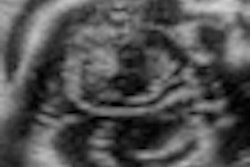Dear Advanced Visualization Insider,
With an ever-increasing workload and high performance expectations from clinicians and patients, radiology practices could use a helping hand these days. One such assistant could be the use of computer-aided detection (CAD) technology as a secondary reader to help radiologists assess large datasets in short time frames.
Researchers from the U.S. National Institutes of Health (NIH) have been developing such a tool for automated assessment of vertebral fractures on trauma CT studies. In testing, the technique yielded high sensitivity and specificity.
Our coverage of their work is the subject of this newsletter's Insider Exclusive, which you can access before our other AuntMinnie.com members.
In other news in the Advanced Visualization Digital Community, another NIH team is reporting that its lesion segmentation method can accurately segment areas of high radiotracer uptake as well as corresponding anatomical structures on PET/MRI studies. This would make it easier for clinicians to identify boundaries between disease and healthy tissue, according to the researchers. To learn more, click here.
In addition, a Japanese team has found that its ultrasound CAD method can provide a boost to reader accuracy and diagnostic confidence in characterizing breast lesions.
Researchers are also continuing to explore the use of Microsoft's Kinect motion-sensing gaming technology by surgeons to manipulate images on operating room workstations. Discover what a team from Purdue University concluded from its testing by clicking here.
A group from Case Western Reserve University recently determined that CAD performance in the prostate varies based on the specific region of the prostate being examined. As a result, zone-specific CAD tools are required.
In controversial developments, CAD was cited in a recent article in JAMA Internal Medicine as one of the technologies that is driving Medicare breast screening costs higher. More information can be found here.
Also, find out why 3D/4D ultrasound may finally be coming of age.
Do you have any interesting images or clips that might be suitable for our AV Gallery? You are welcome to submit them here.




















